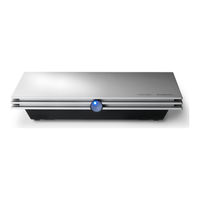Interacoustics Eclipse VEMP Manuals
Manuals and User Guides for Interacoustics Eclipse VEMP. We have 1 Interacoustics Eclipse VEMP manual available for free PDF download: Instructions For Use Manual
Interacoustics Eclipse VEMP Instructions For Use Manual (149 pages)
Brand: Interacoustics
|
Category: Medical Equipment
|
Size: 2.89 MB
Table of Contents
Advertisement
